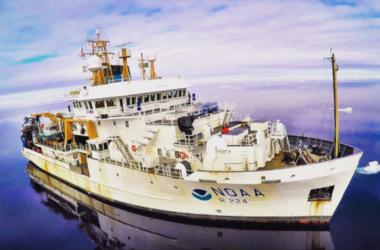The Alaska LNG project is set to begin summer field testing in the Nikiski area focusing on collecting water use and site-specific geotechnical data.
Project Advisor Jeff Raun says one of the most important tests is a ten-day water test…
Raun: “We’re going to install a few wells into both the second and third aquifer and observe what happens when over a short period of time we pump from those wells water to understand if there are effects on those aquifer systems. We don’t anticipate negative impacts but we need to test to better understand what’s happening in those aquifers so that we can insure moving forward in construction, when we do need water over a longer period of time that we can have that water supply without impacting negatively other users in the area.”
Raun says two test wells will be drilled into the second aquifer, which is believed to be connected to the first aquifer. Around twelve observation wells will be installed on parcels surrounding the wells to monitor what happens when 350 gallons per minute are pumped out.
The third aquifer is said to be self-contained and another well will be drilled into it in order to pump 1,000 gallons per minute for eight hour periods, as a way to test that aquifer for firefighting needs.
The water pumped would then be discharged into a Nikiski rock quarry near a former septic discharge facility and Raun addressed concerns voiced by locals.
Raun: “The Alaska LNG project LLC purchased what was formerly a septage facility in Nikiski. That facility went through a rigorous closure process, also with DEC, where they had wells installed and monitored to better understand what’s happening, subsurface, both in terms of soils and ground water. That facility is well over 100 feet away from that rock quarry that we intend to discharge our water into.”
In addition to the water tests, the Alaska LNG project will conduct both onshore and offshore testing with the aim of gaining more final placement suggestions for large equipment. Offshore the Maritime Maid out of Homer will help crews recover information about the Cook Inlet’s currents. Onshore crews will drill boreholes up to 150 feet deep.






